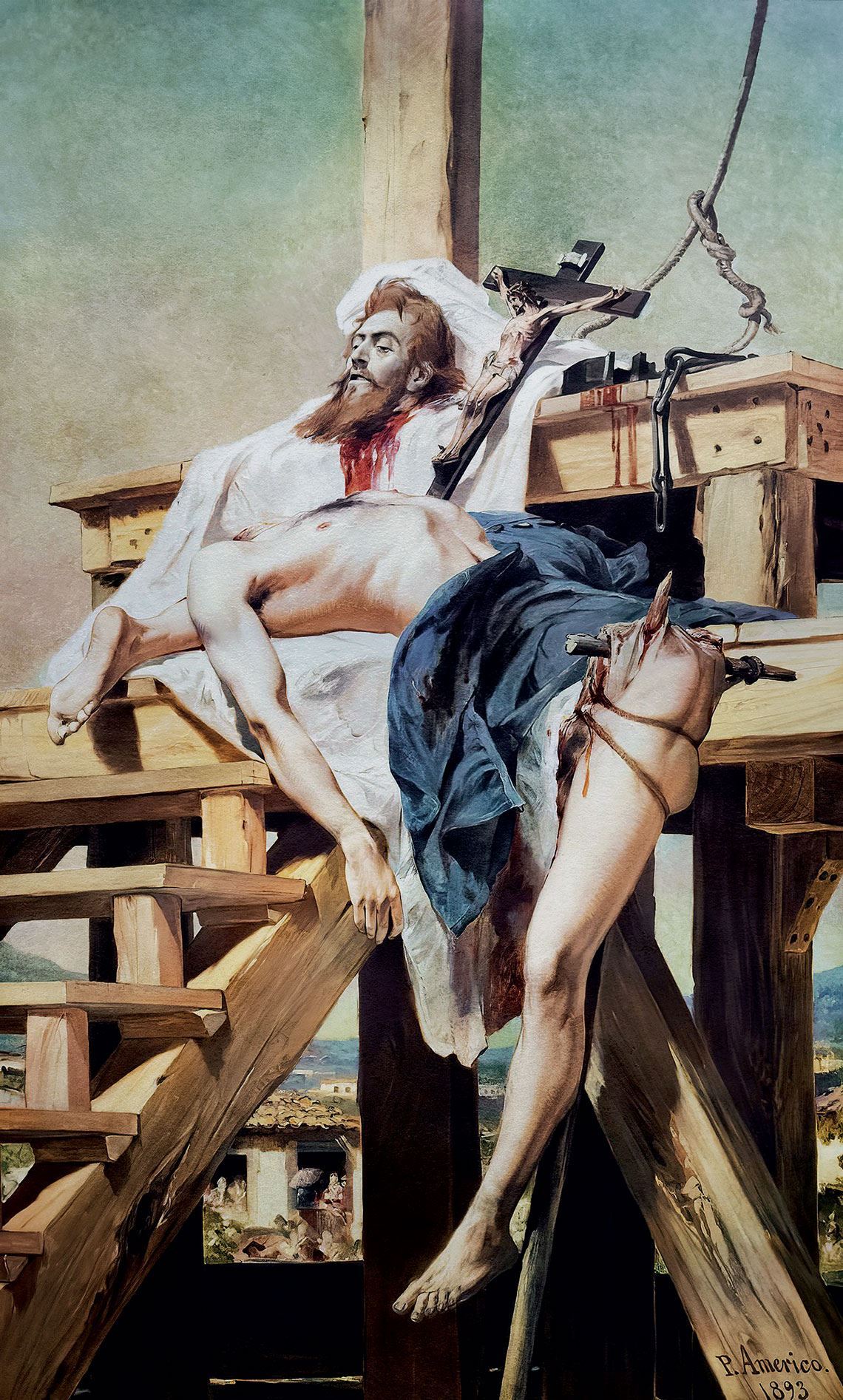
Reproduction
Originally titled Tiradentes supliciado [Tiradentes tortured], the work Tiradentes esquartejado [Tiradentes dismembered] was painted by artist Pedro Américo in 1893Reproduction“What makes this abundance of representation intriguing is the fact that we don’t actually know what Tiradentes looked like,” says André Figueiredo Rodrigues, of the Graduate History Program at the College of Letters and Sciences of São Paulo State University (UNESP), Assis campus. A specialist in the history of the Inconfidência Mineira, the researcher has just launched, with historian and co-author Maria Alda Barbosa Cabreira, the book Em busca de um rosto–A república e a representação de Tiradentes [In search of a face: The republic and the representation of Tiradentes] (Editora Humanitas). Based on extensive documentary analysis, the book details how Tiradentes was elevated to the status of national hero, and his image constructed to fit the interests of republican groups during the late nineteenth century. The result of academic research conducted by Cabreira and Rodrigues, their book chronologically reconstructs the production of images that would eventually become the symbolic representations of one of the grandest figures in Brazil’s colonial history.
In accounts regarding his appearance from his fellow conspirators there are some less than appreciative assessments, such as that by lawyer and poet Inácio José de Alvarenga Peixoto (1742–1793), who said Tiradentes was an ugly man, with bulging eyes. An innkeeper, João da Costa Rodrigues (1748–?) remarked that he had white hair. The absence of any visual records depicting the hero of the Inconfidência created an opening for approximating Tiradentes’ image to that of Jesus Christ. Quite conveniently, this interpretation would become emblematic by corresponding to other more plausible elements that allowed the association to be made. “The fact that he was betrayed by one of his friends—in this case Joaquim Silvério dos Reis [1756–1792]—and that his death was seen as a symbol for the defense of a collective ideal led to a Christianization of his image”, Cabreira assesses. What contributed to this, the researcher points out, were the meanings inherent in his execution by hanging, followed by dismemberment, and the fact that Tiradentes’ head was put on display in the public square. Such events would be successively portrayed by various artists and used by politicians interested in giving new significance to his image.
Among the sculptures, the statue that occupies the central monument of the square that bears his name in Ouro Preto, Minas Gerais, stands out. Produced in bronze by Italian artist, architect, and sculptor Virgílio Cestari (1861–?) and inaugurated in 1894, the work was selected through a competition organized by the Minas Gerais government to build an obelisk dedicated to Tiradentes in the heart of the city.
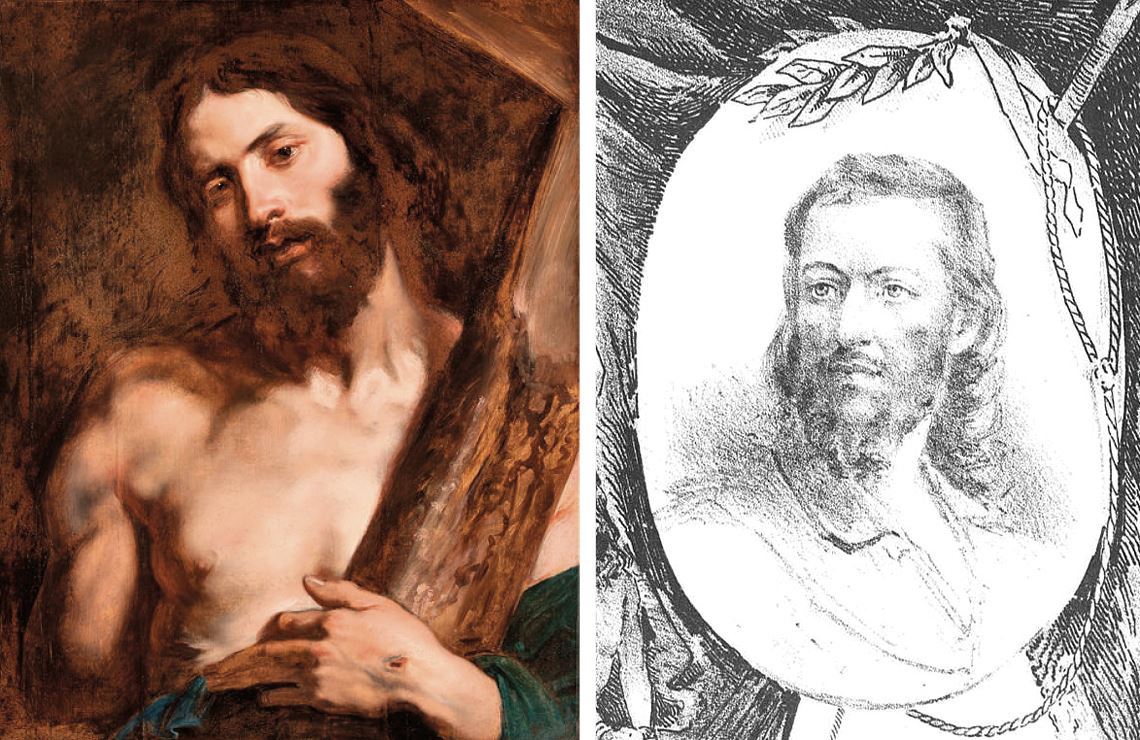
Reproduction and Revista Illustrated
Left, the representation of Jesus Christ, by Antoon van Dyck, which inspired the illustration by Angelo AgostiniReproduction and Revista Illustrated“Despite being the runner-up, Cestari won by proving that he could carry out the work according to the project’s guidelines, something that the runner-up was unable to do,” says Rodrigues. To accomplish the task, the sculptor produced the first known image of Tiradentes, using as a reference a sketch produced in 1890 by a fellow countryman, the artist Angelo Agostini (1843–1910), who had himself been inspired by the work Christ Carrying the Cross, by Belgian painter Antoon van Dyck (1599–1641). “Not knowing what he looked like, Agostini used the aesthetic prerogatives of the time to represent Tiradentes with a beard and long hair, with references to the image of Christ,” adds Rodrigues.
Although he was unable to faithfully reproduce Agostini’s design, partially due to difficulties involved in transposing it to a three-dimensional version, in the end Cestari was responsible for creating one of the predominant representations of Tiradentes, given the importance the statue has for Ouro Preto, a city known for its baroque architecture that receives about 500,000 tourists annually. “It’s an imposing image that can be seen from anywhere in the city,” notes Rodrigues.
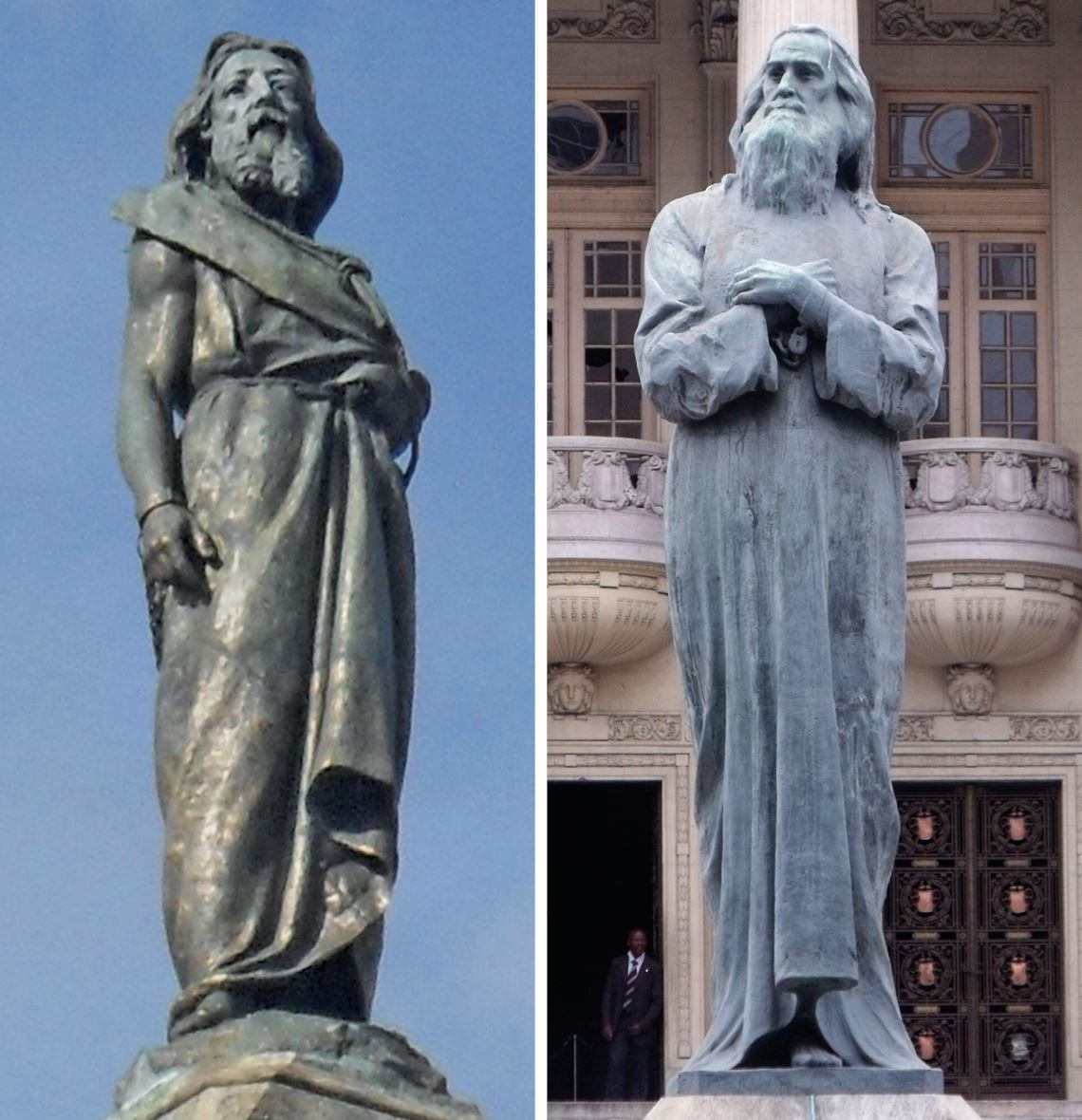
André Figueiredo Rodrigues
Sculptures by Virgílio Cestari and Francisco de AndradeAndré Figueiredo RodriguesAnother emblematic work is installed in front of the Palácio Tiradentes in Rio de Janeiro, which now houses the state’s Legislative Assembly. Sculpted in bronze by Francisco de Andrade (1893–1952) and inaugurated in 1926, it presents the revolutionary as “more citizen, and less rebel, without the rope around his neck,” says Rodrigues, in describing the representation that became more often recognized as a symbol of the Republic than with the colonial uprising. This image would be institutionalized during “state of exception” eras, such as those that occurred under the government of Getúlio Vargas (1882–1954) in 1930, and during the military dictatorship (1964–1985). In the year following the 1964 Brazilian coup, Marshal Humberto de Alencar Castelo Branco (1897–1967) signed Law 4,897, which designated Tiradentes the nation’s civic patron. In 1966, Francisco Andrade’s statue became the official image. “From then on, Tiradentes became a mandatory subject in moral and civic education classes. And until 1986, public schools were obligated to display an image of him,” Rodrigues adds.
The representations of Tiradentes’ image are also based on the context in which he lived. Joaquim was the fourth of five children born to his Portuguese father, Domingos da Silva dos Santos (1698–1757), and Brazilian mother, Antônia da Encarnação Xavier (1721–1755), but was separated from his brothers around the age of 11, after the death of his parents. With the break-up of his family he went to live with his godfather, Sebastião Leitão, a dentist who soon noticed the boy’s own ability to treat dental problems and encouraged him to dedicate himself to the discipline.
“Even without formal education, Tiradentes became quite accomplished at the profession and was very much in demand by people from every social strata,” says Cabreira, who also highlights Tiradentes’ expertise in developing dental prostheses using animal bones, ivory, and even gold [His nickname—originally pejorative—literally means “tooth puller”]. In their book, Rodrigues and Cabreira present historical specifics that counter the stereotype that Tiradentes had been a poor man. His family was financially well off and owned a large farm located between the villages of São José—the present-day city of Tiradentes—and São João del-Rei, in Minas Gerais.
In addition to the details that contribute to constructing Tiradentes’ image as a good man who brought relief to those suffering from toothaches, there are the narratives of friars José Carlos de Jesus Maria do Desterro (approx. 1745–1825) and Raimundo da Anunciação Penaforte, who accompanied the rebel during his last days in prison. Both walked alongside Tiradentes to the gallows and remarked on the passive and humble figure of the condemned in their writings. “Broadly speaking, he is portrayed as a man with a straightforward gaze, wearing white robes and a crucifix on his chest, with loose hair down to his shoulders,” says Rodrigues. Tiradentes’ image as a hero was to gain momentum due to his revolutionary bent, becoming that of a martyr who sacrificed himself for the Republic. The first representation of Tiradentes in an ensign’s uniform would appear in 1940, in a portrait produced by São Paulo painter José Wasth Rodrigues (1891–1957). Portraying the patriot as young, elegant, and at the same time austere, the work was painted to complete the exhibition for the 8th Centenary of Portugal, held in Lisbon. “The objective was to establish Tiradentes through his basic human type, as he appears dressed in the dragoon uniform of the Minas Gerais Cavalry Regiment,” says Rodrigues. Tiradentes was accepted into military service in 1775, as an ensign in the 6th Minas Dragoon Company, a post he held until his death.
It was with the work Tiradentes esquartejado [Tiradentes dismembered] (1893), originally titled Tiradentes supliciado [Tiradentes tortured], by painter Pedro Américo (1843–1905), that his image as a revolutionary reached its most controversial episode. Depicting the man’s mangled body on the gallows, with his head separated from the trunk and positioned next to a crucifix, the image is a far cry from the figure of the hero that was to serve as an inspiration for the new era of the Republic. In grand dimensions, the painting frankly exposes the outcome of Tiradentes’ death, and the execution of his sentence for the crime of lèse-majesté, on charges of conspiring against the Portuguese Crown.
Trained at the École des Beaux-Arts in Paris, France, before producing the work Pedro Américo had previously been hired to portray other moments in the country’s history. The reaction to this painting by the respected artist, however, was negative. “In choosing to present his body abandoned in pieces on the scaffold, Pedro Américo not only accentuates the power of the Portuguese homeland over its colony in the Americas, but also reveals the very fragility of Tiradentes and the conspiracy he was accused of leading,” writes Maraliz de Castro Vieira Christo, in an article entitled A fragmentação do corpo do herói e a sensibilidade do final do século 19 [The fragmentation of the hero’s body and the sensibilities of the late nineteenth century]. A tenured professor at the Federal University of Juiz de Fora, Christo is the author of a study that analyzes the painting as a kind of deconstruction of the Tiradentes image, undermining the integrity of his representation as a hero.
“The dismemberment of the body alludes to the dismantling of the individualistic, epic figure of the rebel,” observes Maria Helena Vicente Werneck, a professor at the Graduate Program in Performing Arts at the Federal University of the State of Rio de Janeiro (UNIRIO). In her essay “Representations of the Martyrdom of Tiradentes” she analyzes his execution from the basis of the presentation or concealment of his death’s public performance. “Portraying the body whole—or torn apart—in an artistic representation refers us to different aesthetic-political projects that are intended to reframe the historical figure’s meaning,” Werneck assesses. The researcher points to works from various eras of Brazilian theater, among them the staging of the musical Arena conta Tiradentes [The Arena Theater tells of Tiradentes] (1967), by Augusto Boal (1931–2009) and Gianfrancesco Guarnieri (1934–2006). In it, the group creates a theatrical narrative reinterpreting the Inconfidência using the events of the 1960s, and calling for an image of Tiradentes capable of attracting revolutionaries. “What we can see in this show is another approach to dismantling the image of the sacrificial hero, on the scaffold with his body punished by dismemberment, in order to turn him into a political subject projected onto the action,” she states.
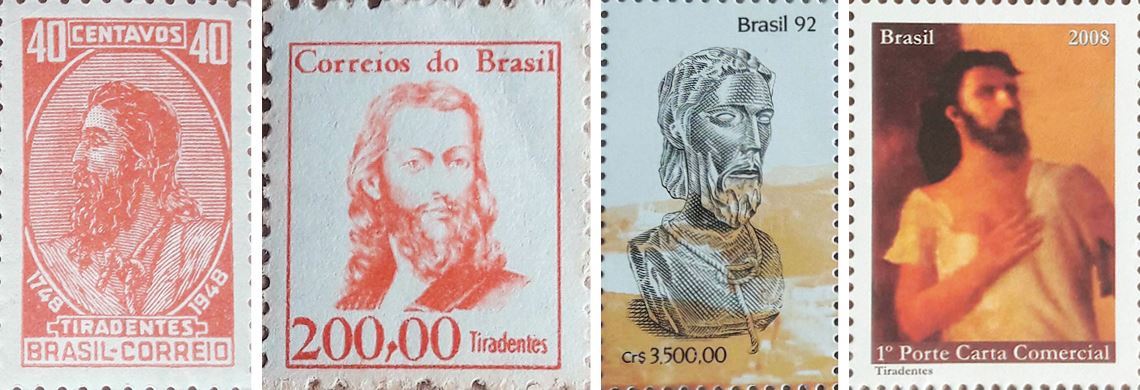
André Figueiredo Rodrigues Collection
Tiradentes’ image appeared on four stamps: in 1948, 1963, 1992, and 2008André Figueiredo Rodrigues CollectionWith his name already famous by having streets, squares, schools, and public buildings nationwide named “Tiradentes,” visual representation of the national hero expanded the dimensions of his historical character by means of numismatics and philately. “Coins, banknotes, and stamps were a few of the main ways of spreading the revolutionary’s image, which began to circulate in people’s hands around the same time that it was being established in the popular unconscious,” observes Cabreira.
The first image came on the 5,000 cruzeiros (Cr$5,000) banknote, in circulation between 1963 and 1974. The image reproduces the painting Tiradentes ante o carrasco [Tiradentes faces the executioner] (1951), by Rafael Falco (1885–1967), and recreates the early morning scene when the convict was preparing to receive the white robe, before the procession that would take him to the gallows. On the obverse, in the section dedicated to his image, the portrait of Tiradentes is also based on Agostini’s representation. A commemorative-edition coin minted in 1992, also valued at Cr$5,000, featured an engraving inspired by the work of painter and caricaturist Décio Rodrigues Villares (1851–1931). Since 1998, the five-cent coin has displayed a modified version of the Falco canvas.
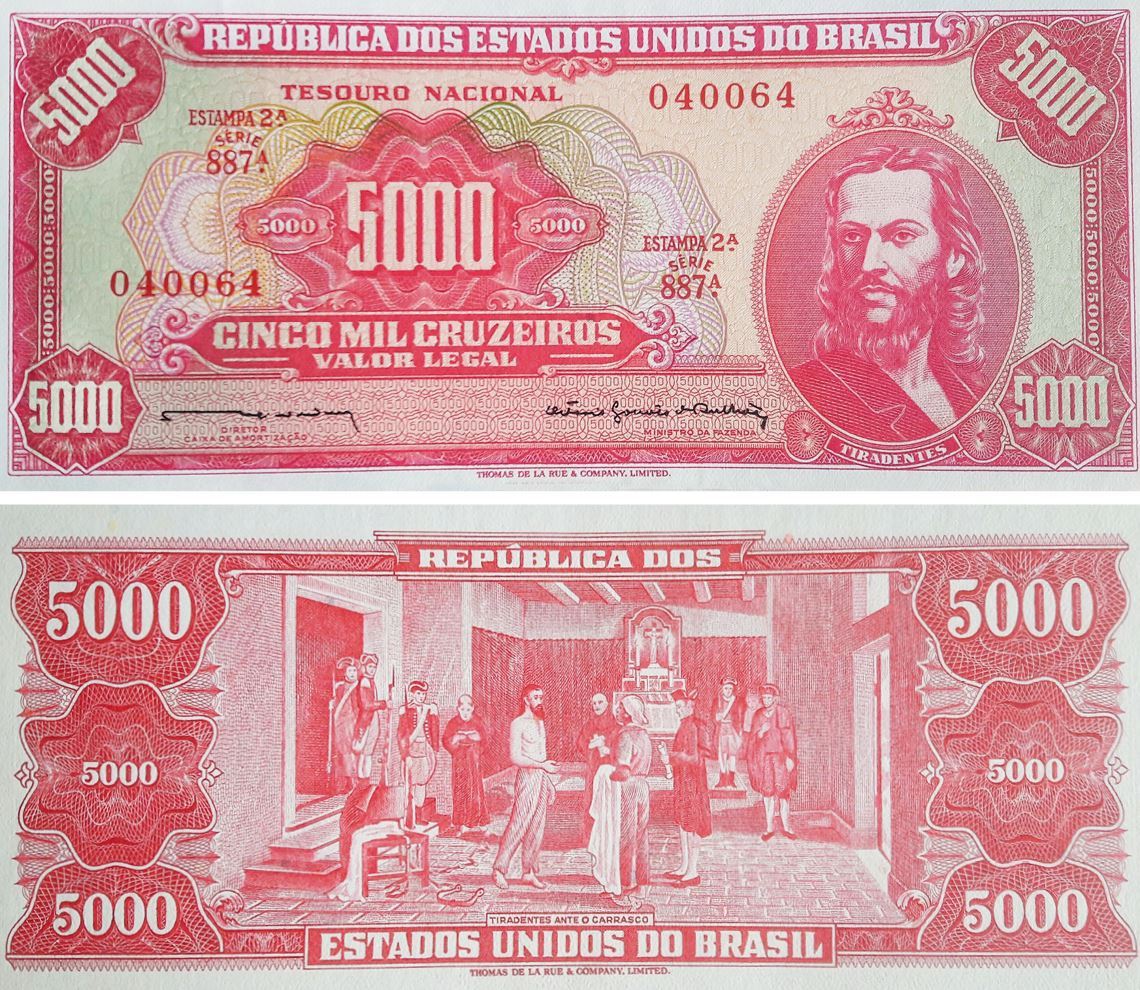
André Figueiredo Rodrigues Collection
Banknotes minted by the Brazilian Mint in the revolutionary’s honorAndré Figueiredo Rodrigues CollectionIn the field of philately, Tiradentes’ image has been printed on four official Brazilian stamps, the first in 1948, on the bicentenary of his birth. In 1963, he appears in the series “Famous Figures in Brazilian History,” and in 1992 a stamp commemorated the bicentenary of his death. Finally, in 2008, he appears as part of a series of stamps called “National Heroes.” Banknotes, coins, and stamps are officially issued by the Brazilian Mint, in Rio de Janeiro. The famous hero also gained international prominence with stamps released in Cuba (1988), Uruguay (1989) and the Dominican Republic (2014).
Although Tiradentes’ appearance had been created to approximate an artist’s image of Jesus Christ, documents in the Autos de Devassa—criminal proceedings filed against the Inconfidentes—reveal that at the time of his death he was beardless, and his head was shaved so that his torment could be better observed by the attending audience. “It should be emphasized that the various representations of Tiradentes arise out of the poetic license of authors who were engaged in creating a myth, but his image will always be under construction,” concludes Cabreira.
Scientific articles
CHRISTO, M. C. V. A fragmentação do corpo do herói e a sensibilidade do final do século 19. Artes e Ensaios, Rio de Janeiro, UFRJ, Vol. 16, pp. 72–81, 2008.
WERNECK, M. H. Representações do martírio de Tiradentes: a performance da morte em público. Revista Semear, Rio de Janeiro, PUC-RIO, Cátedra Padre António Vieira de Estudos Portugueses, Vol. 5, 2001.
Book
In search of a face – the republic and the representation of Tiradentes, André Figueiredo Rodrigues and Maria Alda Barbosa Cabreira. São Paulo: Humanitas, 2020.

